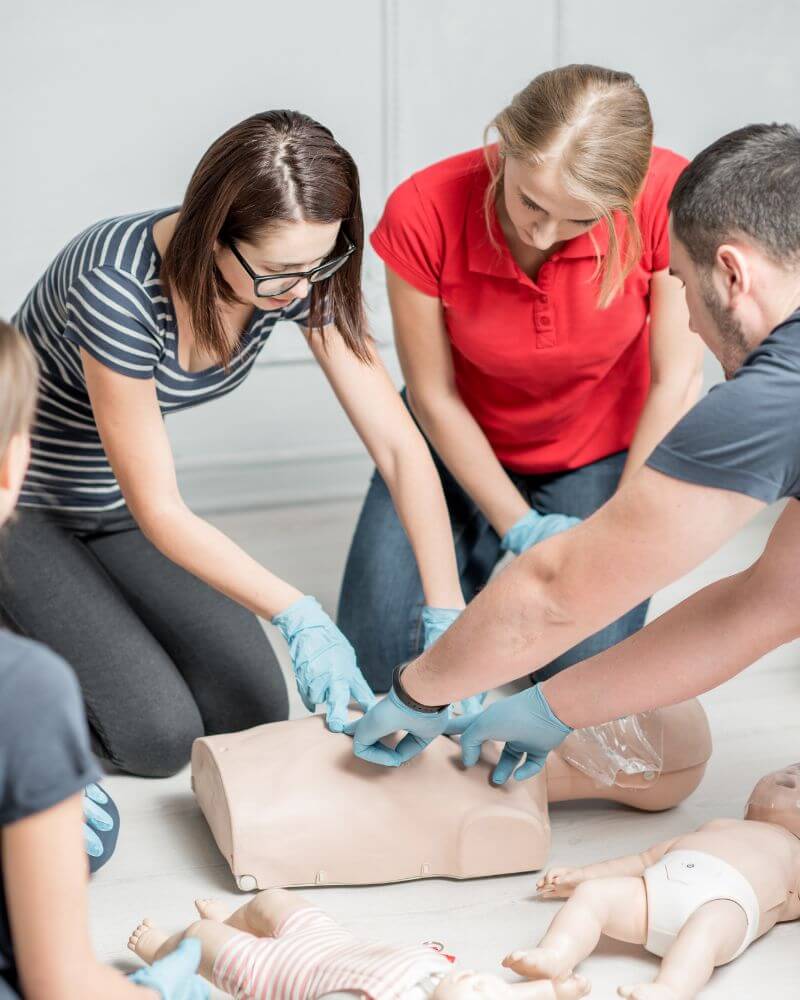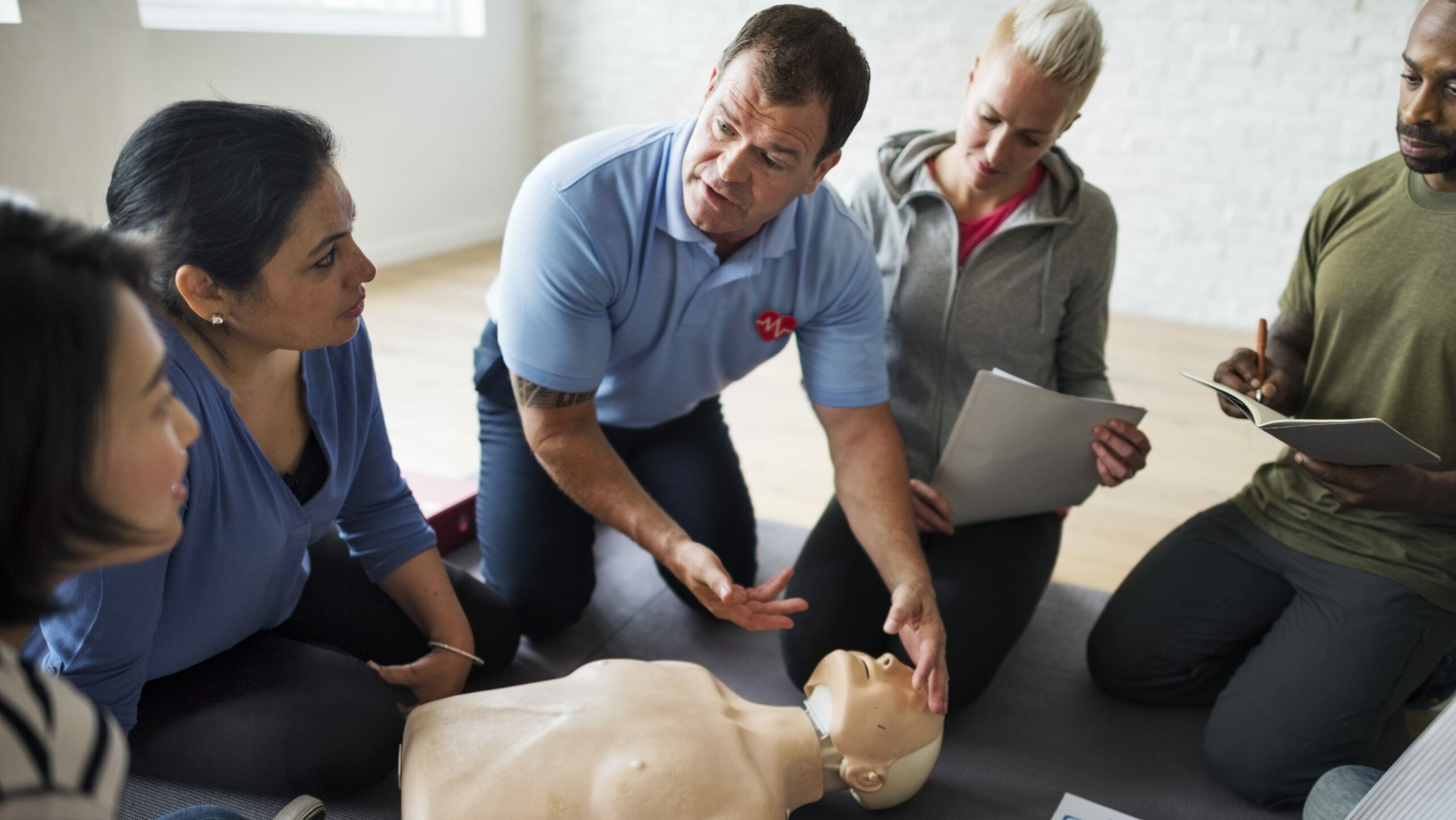Introduction
In our hectic globe, emergency situations can strike anytime, whether at home, work, or in public spaces. Being prepared to respond effectively can make the distinction in between life and death. This is where emergency treatment enters into play. While many view a first help course as just a demand for sure professions or an addition to their resume, it extends far past that. It incorporates skills that empower individuals to act confidently during emergencies.
First aid expertise not just saves lives however also boosts community safety and security and develops durability among people of every ages. In this short article, we will discover the multifaceted duty of emergency treatment in day-to-day life-- dissecting Child Care First Aid Courses Near Me its significance, the training included, and exactly how it outfits people with vital abilities that reverberate through numerous facets of life. So, buckle up as we dig much deeper right into The Role of Emergency treatment in Everyday Life: Greater Than Just a Certificate
The Role of First Aid in Everyday Life: Greater Than Simply a Certificate
Understanding Very first Aid
First help describes the immediate treatment provided to someone who has suffered an injury or illness prior to professional clinical aid shows up. The objective is uncomplicated: maintain the individual's problem and stop more damage. This may involve basic strategies like using bandages, carrying out mouth-to-mouth resuscitation (Cardiopulmonary Resuscitation), or utilizing an Automated External Defibrillator (AED).
It's critical to recognize that first aid isn't practically physical injuries; it encompasses mental wellness emergencies also. For instance, providing support during an anxiety attack or recognizing signs of shock can likewise belong to effective very first aid.
The Significance of First Aid Training
Why ought to everybody think about signing up in a first aid course? The answer lies in preparedness. Emergencies are unforeseeable; nevertheless, being trained methods you can respond swiftly and efficiently when they occur.


The Framework of an Emergency Treatment Course
A typical first aid course often covers:
- Basic CPR techniques Use of AEDs Bandaging injuries Responding to choking incidents Treating burns and cracks Managing shock and seizures Mental health initial aid
Courses might vary from standard training sessions lasting a few hours to thorough multi-day workshops where individuals make a first help certificate upon completion.

Why Select mouth-to-mouth resuscitation Courses?
CPR courses particularly focus on training lifesaving methods that can be employed when a person quits breathing or their heart quits beating.
Key Elements:
- Adult, kid, and baby mouth-to-mouth resuscitation techniques Rescue breaths vs. chest compressions Recovery positions
According to numerous studies, prompt mouth-to-mouth resuscitation can increase or even triple the possibilities of survival for cardiac arrest victims. As a result, spending your time into a CPR course is definitely worthwhile.
How to Select the Right Course
With various organizations supplying training worldwide, picking the appropriate program might appear daunting. Right here are some ideas:
Accreditation: Guarantee the institution is recognized and accredited. Course Material: Evaluation what certain skills are taught. Teaching Design: Some individuals find out far better with hands-on practice; check if sensible presentations are included. Location & Timing: Go with classes that fit your schedule without included stress.First Aid Abilities Every person Should Master
1. Choking Management
Choking is just one of one of the most typical emergencies experienced daily; hence recognizing how to do stomach thrusts (the Heimlich maneuver) can be lifesaving.
Steps:
Assess the circumstance-- ask if they're choking. Stand behind them, put your arms around their waist. Make a clenched fist with one hand and location it over their navel. Grasp the clenched fist with your various other hand and thrust internal and upward till they cough or take a breath again.2. Carrying out CPR
As described previously, mouth-to-mouth resuscitation is important for any individual experiencing cardiac arrest:
Steps:
Call emergency situation solutions immediately. Begin chest compressions at a price of 100-120 compressions per minute. If educated, supply rescue breaths after every 30 compressions (30:2 proportion).3. Dealing with Wounds
Wound care may appear trivial however knowing just how to cleanse and dress wounds appropriately can stop infections:
Steps:
Wash hands thoroughly. Apply gentle pressure with clean and sterile gauze until hemorrhaging stops. Clean around the wound with soap and water before applying an antibiotic ointment and dressing.Mental Wellness First Aid
Emergencies aren't entirely about physical injuries; psychological wellness dilemmas require instant focus too!
Recognizing Indications of Distress
Understanding indications such as severe stress and anxiety or visible distress helps you interfere appropriately:
Listen actively without judgment. Offer reassurance while encouraging expert assistance if necessary.Providing Assistance During Crises
Be tranquility yet assertive; directing someone through panic attacks using grounding methods can ease their signs significantly.
The Effect on Families
First help knowledge plays an indispensable function within households-- producing satisfaction relating to security while nurturing responsibility among kids as well.
Teaching Kids About First Aid
Instilling these abilities beforehand guarantees youngsters mature recognizing exactly how essential it is CPR Courses to take care of themselves and others:
Use age-appropriate language. Engage them through fun tasks like role-playing scenarios where they use basic techniques!Workplace Security Culture
Employers ought to prioritize first-aid training within their workplace atmospheres for various factors:
1) Compliance with Occupational Security Regulations: Numerous workplaces need to adhere purely to security standards requiring qualified personnel prepared throughout emergency situations-- minimizing liability threats overall!
2) Improved Employee Morale: Staff members feel valued when business invest in their health-- creating strong group characteristics where participants watch out for each other's welfare promotes trust!
Conclusion
In conclusion, embracing emergency treatment expertise goes beyond merely getting qualification-- it embodies preparedness towards life's unpredictability whilst supporting personal development along the way!
Investing time right into discovering abilities such as CPR not only enhances specific capabilities however strengthens communities against possible dilemmas lurking around every corner! Inevitably ending up being equipped conserves lives while promoting much healthier societies-- making it vital that everybody takes into consideration enlisting in thorough programs focused on both basic 'first-aid' & & specialized 'mouth-to-mouth resuscitation programs'.
Frequently Asked Questions
What is consisted of in a typical first aid course?
A standard emergency treatment course generally consists of guideline on basic wound treatment, CPR techniques for adults/children/infants, choking management procedures along with managing shock/seizures effectively consisting of practical drills!
How long does it take to complete a CPR accreditation class?
Most CPR qualification classes range from 4-- 8 hours depending upon whether they cover adult/child/infant specifics! Check regional offerings for precise timing details tailored specifically in the direction of your needs/preferences!
Is my first-aid certificate legitimate indefinitely?
No! Many accreditations have expiration dates (generally 2 years); routine revival ensures updated data base on present guidelines/best practices!
Can I educate others once I complete my training?
While you gain useful understandings throughout these programs; formal training requires extra qualifications/certification from identified companies regulating instructor-led programs!
Are online training courses effective compared to typical classes?
While online finding out gives adaptability & & convenience; hands-on method stays essential specifically regarding skill-development needed along with theoretical understanding-- hybrid approaches typically generate best results!
By incorporating these important methods right into our day-to-days live we can cultivate much safer environments anywhere! So why wait? Join today for any kind of offered 'First-Aid' & & 'MOUTH-TO-MOUTH RESUSCITATION' programs-- you'll thank yourself later!